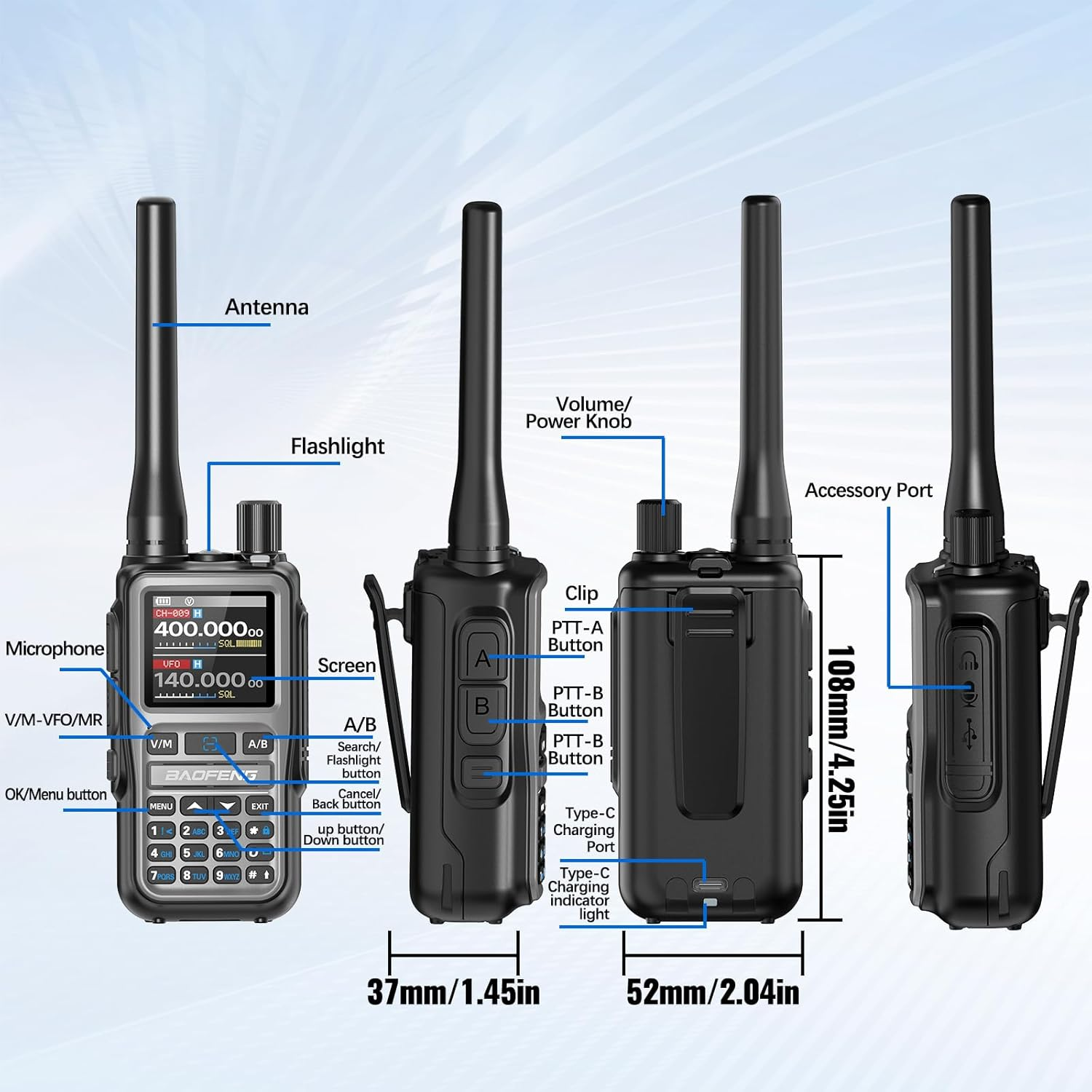Every ham is familiar with the brand Baofeng. Most of us probably started with a Baofeng UV-5R as one of our first radios, before moving on to more expensive units. When I got my ham ticket, I wasn’t sure if I was even going to like the hobby, so I bought a $25 Baofeng and used it for a bit while I got comfortable talking on the radio and learning the ropes.
Since then, I’ve moved to more expensive radios from Yaesu, Icom, and Kenwood, but for some reason I always return to the Baofeng for certain situations. For example, when we go out to Field Day, I’d rather have a cheap, inexpensive radio that I can use without risking getting it wet, dropping it, or losing it (like I have in the past). Thank God that was just a Baofeng I lost, not one of the pricier radios.
My latest addition to the Baofeng collection is the Baofang UV-5R Mini ham radio. It’s a simple VHF/UHF dual-band radio that feels solid in the hand despite being very small. It has a built-in broadcast radio, weather channels, the mandatory Baofeng flashlight, and a great-looking little screen. For about $23 each when you buy a pack of two, I think it’s well worth the investment.
I’m going to add it to my stash of inexpensive radios that I can throw in the truck or take with us on family outings, since most of my family are hams themselves. I haven’t tried this yet, but some people say it’s possible to communicate on GMRS frequencies. However, transmitting on GMRS without a GMRS license is illegal (the Baofeng exceeds FRS power limits), though listening is perfectly fine.
For example, monitoring your local fire department for situational awareness is always a ham favorite.
The revamped menu on this radio is pretty good too. I think it’s the display that makes the difference, because the old Baofeng radios were just horrible for me to see. This screen is vibrant and looks really refined compared to older models. Now, the last thing for me to do is try them out and see if they do what they’re supposed to do: transmit and receive. Let’s see how sensitive they are and whether they discriminate against spurious emissions.
